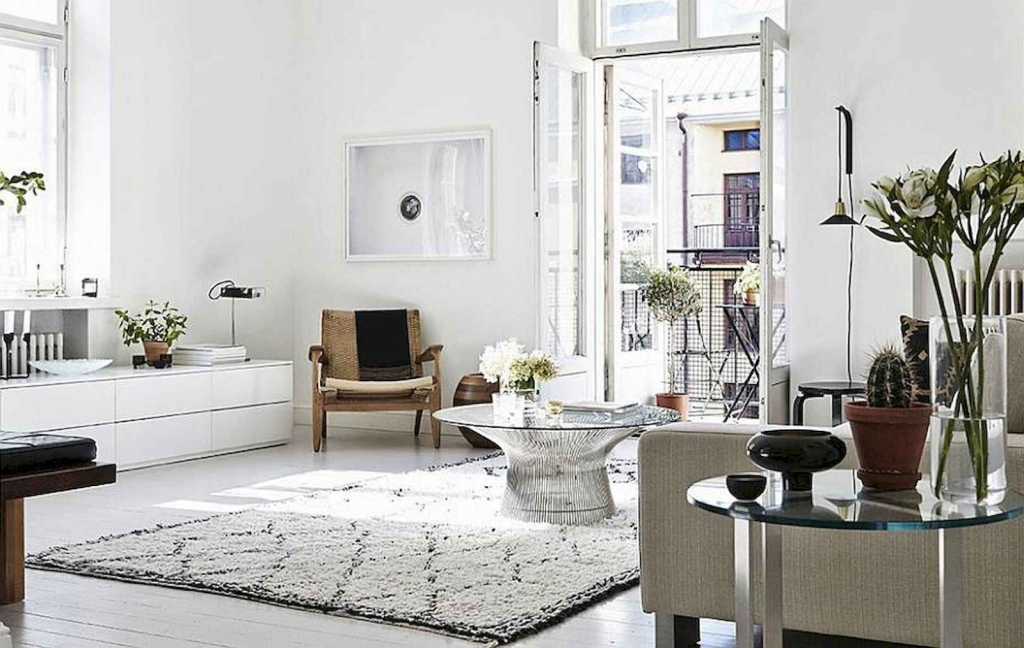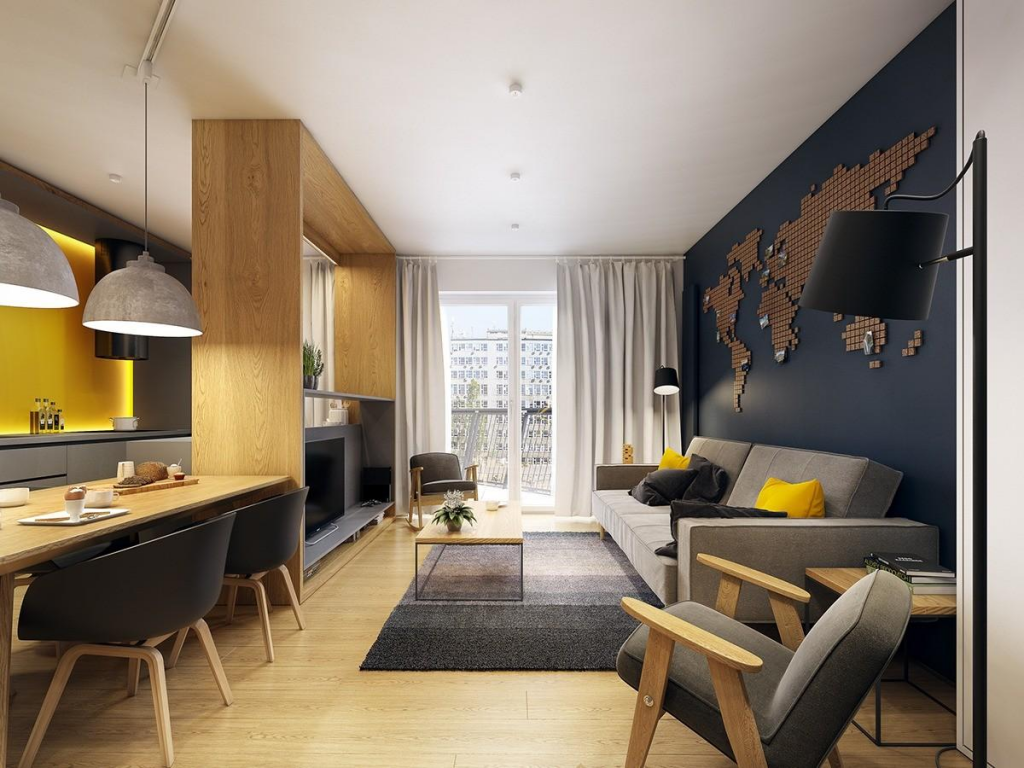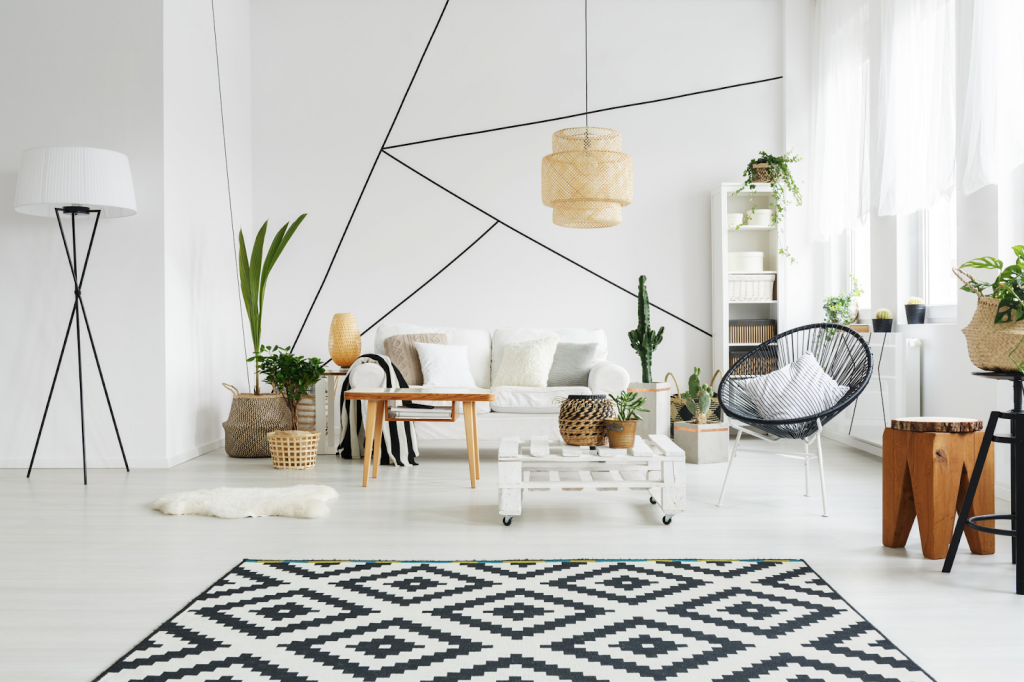How Can I Decorate My Home in Scandinavian Style?


In the 20th century, there are plenty of growing design trends suitable for the interior of your home. They exhibit the potential in bringing the best out of your home’s aesthetic. With all the different design movements, it may be difficult to choose what’s best. Hence, when broken down, the common denominator would be simplicity and functionality. But, in every home, identity is where we pay attention to the most. This makes the Scandinavian style the perfect choice for the interior of your home. It may be a movement that started in the 50s but it still remains to be an icon up until today.
The Scandinavian style is beyond the obvious characteristics of craftsmanship and Bohemian design. There is more to it than characteristics of detailed and neutral interior design. It plays significance in the placement of every element within a space. This defines the identity of the Scandinavian style. Allow this article to provide enlightenment on how to spice up the ordinary living space. Here are tips we can spare on how to decorate your home in Scandinavian style.
Choose Neutral or Light Colors


The common characteristic of the Scandinavian style is the neutral and light color. A couple of nudes, grays, whites and even blacks establish a clean and minimalistic look. It may look simple but it highlights the specified features of the space. Even though the colors may seem calm, they have their way of popping up with suitable complementary colors. What captivates the viewers is the ambiance you are trying to build. There are ways on how to keep the colors pop up. It may not be used for the walls but textiles, flooring, and even ceiling can work well with the Scandinavian ambiance.
Experimentation is a suggestion best for trying out different colors that would suit one another. If you’re up for bright colors such as red, yellow, blue, and green, using it is suggested but on a lighter note. The Scandinavian style works on two to three colors with different tones. It depends on how you want the whole space to look. Common in living areas are earth colors such as brown and green. It works perfectly on lighter tones acquiring natural lighting from the windows. Apart from the furniture and materials, color is the most significant aspect of building space. Light colors can possibly be used together but the other one should be a versatile material that will accentuate the colors.
Declutter the Space


The Scandinavian style is often mistaken as minimalistic architecture. It is a part of it but it does not constitute the whole. In designing a space, as much as possible, it has to be neat and free from clutter. It suggests a cleaner space to establish the highlights of the different elements. Keeping it simple and neat defines what should be visible in the living area. As much as possible, keep the decorations at a minimum. This prevents the whole area from looking like a bookcase with plenty of books that should not be there.
In every area, place what is only required and functional for space. Keep what is necessary and remove the ones that will make the space look overdesigned. The minimalistic approach in the Scandinavian style aims to focus on what should highlight the most. In the image above, you can sight how clear the area is. Everything needed is there but on the bare minimum such as the magazines, books, and vases. Not because different pieces would look pretty together does not mean they are all required to be in your living area. Simple is better and beyond perfect when executed accordingly. Besides, according to Ludwig Mies van der Rohe, “less is more”. Add only the things that you think are necessary to prevent over cluttering the space.
Wood and Metal is a Plus


Two materials that are often used in Scandinavian interior design are wood and metal. These two versatile materials keep the whole look bold and iconic. They define how big or how small the space to be covered is. Wood comes in different colors, textures, and materials. It brings a warm and cozy feeling to the home. They can work on wall cladding, ceilings, and even floorings. Whether it be your dominant material or an accent, wood suits perfectly with different materials such as metal and textile. Hence, it blends smoothly with the architectural interior of the space.
The modern side of Scandinavian design works well in focusing on the furniture. Metal plays a significant part in the linear aesthetics of the walls, furniture, and flooring. It may seem to be too metallic to use but it defines the simple details. This includes lighting fixtures and even furniture details. It is not so bad to put a subtle amount of metal in the living area. Besides, metallic is not always the color of the metal. It works perfectly in a matte finish too.
In the image above, you can see how finished metal is used for the computer chair and the lighting fixtures. It balances well the warmness of the color and the ambiance built by the wood. Besides, the use of metal in the image above acknowledges the linear elements of the living area. Metal and wood are the perfect combinations, especially for Scandinavian-styled spaces.
Add Botanical Pieces


Nothing beats the touch of the earth within an interior space. Botanical pieces in Scandinavian-styled houses build a homey environment. With all the warmness and coolness of the materials used, indoor plants act as a mediator. It balances the balmy and constructive environment in every household. Besides, living spaces highly suggest having neutral colors incorporated. Indoor plants and flowers boost how the overall elements come together. One must scrutinize the color, size, and shape of the preferred plant. On top of that, botanic elements can make your indoor spaces more stimulating. Botanical pieces add a sense of belongingness to the ecosystem.
In the example exhibited above, the designer utilized different placements of the plants. Their personal preferences for indoor plants include free-standing, wide, tall, sturdy, and crawling characteristics. It emphasizes the linear design of how pieces of furniture are placed accordingly. The lightness of the materials used for the dining area toned up with the warmness of wood and the rawness of the plants. It is all about focusing on the type of plants that would complement the entire Scandinavian look you’re rooting for. Besides, nothing beats the accent color and refreshing aura botanical plants bring.
Pick Versatile and Warm Textiles


The next big thing about Scandinavian-styled spaces within residential houses is the preferences of textiles. The walls, ceilings, and flooring are often in either light or dark colors. To add more details to the existing elements, picking textiles that are warm and cozy will work best. Scandinavian characteristics in interior design utilize textured textiles. Whether it be patterned or plain, it is the accent of the entire space. It enables the space to have something to look at considering the clean minimalistic look. The textile of preference would blend the Bohemian-chic look with Scandinavian style.
Apply different combinations of textiles that would work together in terms of color and weight. Thicker matte fabrics can work well with knitted blankets and pillowcases as shown above. The colors of the textiles may be quite far from the ideal tones but it complements the whole Scandinavian look. Swatches of different textile types and colors are highly recommended to prevent the fabrics from outweighing the entire design. In addition, carpets are also ideal, especially in living areas. The warmth these plants bring to the tip of the toes is how every house should feel like.
Pick the Perfect Lighting Fixtures


To top off your Scandinavian-styled interior, illuminate the spaces with accent lighting fixtures. Apart from natural lighting, artificial lighting will do the trick in delivering consistent and proportionate lighting. Besides, not every day is a sunny day. There are three types of lighting often used in residential spaces. These are the main, supplementary, and ambient lighting.
In the image shown above, the main artificial lighting source is the chandelier. It is not of conventional design. The reflector is designed with semi-weaved wooden fibers that displays textured lighting. For the supplementary lighting source, the industrial-themed floor lamp induces moderate glare control. This is perfect for people who are not a fan of a well-lit environment. It may be a direct downlighting fixture but it is not as powerful as the main lighting source. Ambient lighting may not be visible on the image above but the best example would be the use of recessed downlighting. It aims to cover the dull areas with minimal lighting acquired.
Conclusion
Scandinavian-styled houses are perfect for both small and big spaces. That is what makes it a flexible theme for the interior. All it takes is a little research and creativity to try what elements would work together. It is all about the placement, color, texture, and size of every element used for the area. The design does not always have to be grand. It needs to be functional and efficient for the household. Experiment with different clean layouts that would match the preference of Scandinavian interior architecture. Besides, nothing beats a design that is both aesthetically pleasing and functional.
